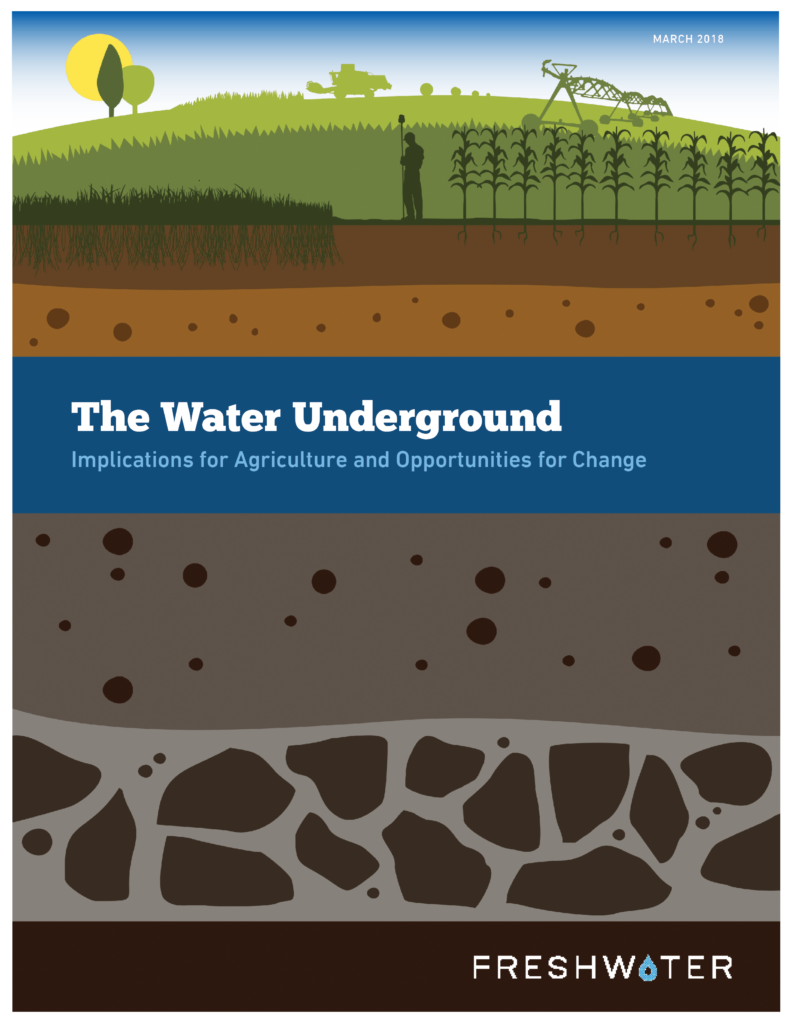by Carrie Jennings, research and policy director

Implications for Agriculture and Opportunities for Change is the third and final report in Freshwater’s The Water Underground series that focuses on Minnesota’s groundwater future. In this report we consider the sustainable use of groundwater through an agricultural lens and focus on two main issues: the quantity and quality of available groundwater in agricultural parts of the state.
Scarcity of groundwater is driving innovation among Minnesota producers who use irrigation practices on their farms. We highlight where they have developed efficient practices that protect groundwater. We suggest how those approaches can be furthered by state investment in training and irrigation scheduling tools currently under development.
In the larger percentage of farmed acres that are drained rather than irrigated, tiling redirects water and alters recharge. We don’t yet know the long-term impact of this practice on groundwater quantity and recommend that it be studied.
Nitrogen contamination was identified as a top concern across Minnesota in a recent survey of water professionals who work for local and county governments. Nitrogen fertilizer leaches from agricultural areas where soil is sandy and irrigation is common. In areas that are not irrigated but instead are drained, tile water is the largest source of nitrogen that pollutes surface water, which in turn recharges groundwater. The increasing number of towns with water supplies that require treatment to remove nitrogen is a concern for all Minnesotans because it burdens the state’s limited tax dollars.
State agencies have different roles in water protection but no agency prevents the pollution of clean groundwater. This is especially significant in parts of the state that are being converted from forest to crops for the first time, like our northern sandplains.
The Minnesota Department of Agriculture is charged with controlling agricultural pollution. Testing and rulemaking regarding nitrogen contamination are currently focused on townships deemed vulnerable. Reversing contamination trends will require full adoption of significant alterations to current nitrogen managment practices, beyond those codified by these rules.
To ensure a safe water supply for all Minnesotans, we need to better understand the health impacts of pesticides in groundwater. State support of new practices will be essential for the transition to a more sustainable agricultural system.